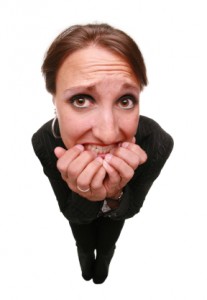Are you struggling with sudden urgency? Not getting to the restroom in time?
 The term “overactive bladder” (OAB) is relatively new, first used in the “got to go, got to go right now” television commercials that appeared in the 1990’s. A more market appealing term than “incontinence”, millions of dollars were invested in wide scale media campaigns that launched “overactive bladder” into the public mainstream. At the time, some physicians worried that it could confuse or delay the diagnosis of bladder diseases such as interstitial cystitis.
The term “overactive bladder” (OAB) is relatively new, first used in the “got to go, got to go right now” television commercials that appeared in the 1990’s. A more market appealing term than “incontinence”, millions of dollars were invested in wide scale media campaigns that launched “overactive bladder” into the public mainstream. At the time, some physicians worried that it could confuse or delay the diagnosis of bladder diseases such as interstitial cystitis.
OAB is thought to be a neuromuscular disorder where the smooth muscle of the bladder, the detrusor, contracts abnormally. The hallmark symptom is “urgency.” The sensation of “urgency” is sudden, difficult to ignore and creates a compelling need to urinate and incontinence may occur if the patient is unable to find a restroom. Urinary frequency is common with patients urinating more than 8 times in a 24 period. Nocturia, the interruption of sleep one or more times because of the need to urinate, may sometimes be the only symptom present.
The International Continence Society defines OAB as “urinary urgency, with or without urgency urinary incontinence, usually with frequency and nocturia, in the absence of causative infection or pathologic conditions and suggestive of underlying detrusor overactivity (phasic increases in detrusor pressure).” (1)
It is the lack of bladder and/or pelvic pain which distinguishes OAB from interstitial cystitis and chronic prostatitis. Additionally, OAB patients do not have discomfort with intimacy while IC and chronic prostatitis patients often do.
The impact of OAB both personally and economically is undeniable. Social isolation, fear of accidents, embarrassment as well as the high cost of medical care and supplies can result in a dramatically diminished quality of life for some patients. An estimated $12.6 billion dollars per year is spent in OAB related costs. (2)
Prevalence
Many studies have assessed the prevalence of OAB throughout the world with rates from 7 to 27% in men and 9 to 43% in women.(3) Women struggled more with incontinence than men in all age groups. Aging and weight also played a significant role. In women, the prevalence of urge incontinence increased with age from 2.0% to 19% with an increase after 44 years of age. Men suffered an increase in their symptoms after the age of 64. Women also showed higher levels of OAB with incontinence as their body mass increased whereas men showed no difference in weight.
Several risk factors have been identified. Caucasians, people with insulin dependent diabetes and/or patients struggling with depression are 3 times more likely to develop OAB. Other risk factors include aging, arthritis, weight gain and people using hormone replacement therapy. (4,5)
AUA Guidelines
 In May 2012, the American Urological Association released their first national guidelines for the diagnosis and treatment of overactive bladder. This groundbreaking document provides patients and provides a roadmap for making a correct diagnosis and creating a customized treatment plan. Read the AUA Guidelines here!
In May 2012, the American Urological Association released their first national guidelines for the diagnosis and treatment of overactive bladder. This groundbreaking document provides patients and provides a roadmap for making a correct diagnosis and creating a customized treatment plan. Read the AUA Guidelines here!
Video Seminar
References:
- Ellsworth P, et al.Overactive Bladder – Etiology, Diagnosis, and Impact. Medscape CME Publicatio. March 25, 2011.
- Milsom I, et al. How widespread are the symptoms of an overactive bladder and how are they managed? A population-based prevalence study. BJU Int. 2001 Jun;87(9):760-6.
- Gormley, at al. Diagnosis and Treatment of Overactive Bladder (Non-Neurogenic) in Adults: AUA/SUFU Guideline. May 2012
- Bailey KL, Torigoe Y, Zhou S, et al. Overactive bladder cost of illness: Analysis of Medi-Cal claims. Presented at the International Society for Pharmacoeconomics and Outcomes Research 5th Annual International meeting,. Arlington, VA. May 21-24, 2000.
- DuBeau CE. Interpreting the effect of common medical conditions on voiding dysfunction in the elderly. Urol Clin North Am. Feb 1996;23(1):11-8. [Medline].
